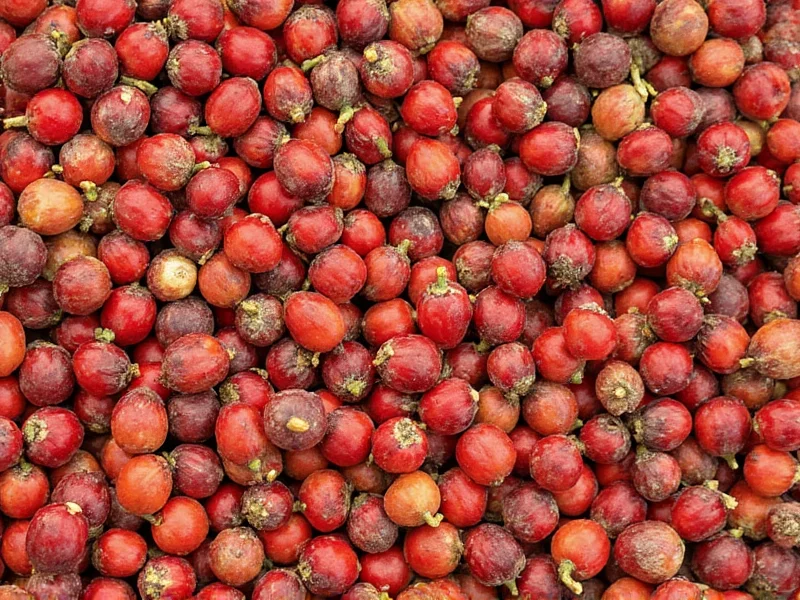The Ancient Origins of Peppercorns
Peppercorns trace their roots to the Western Ghats mountain range in present-day Kerala, India. Archaeological evidence shows peppercorns were used in the Indus Valley Civilization as early as 2000 BCE. The ancient Sanskrit text Charaka Samhita, dating to 600 BCE, documents peppercorns as both a culinary spice and medicinal remedy. Indian traders initially controlled the peppercorn trade, keeping their source location secret to maintain monopoly power.
Peppercorns in Early Global Trade
Ancient Egyptians used peppercorns in mummification processes, with peppercorns found in the nostrils of Ramses II (1213 BCE). The Romans established the first major peppercorn trade route between India and Europe via the Red Sea. Roman naturalist Pliny the Elder complained about the drain of Roman gold to India for spices, noting that 15 metric tons of gold left Rome annually for Indian spices, primarily peppercorns.
| Historical Period | Peppercorn Value Equivalent | h>Historical Context|
|---|---|---|
| Roman Empire (1st century CE) | 1 pound = 4 denarii (soldier's 10-day pay) | Peppercorns stored in Roman treasuries alongside gold |
| Medieval Europe (8th century) | 1 pound = 1 sheep or 8 chickens | Accepted as rent payment and used as collateral |
| Viking Age (9th century) | 1 pound = 1 ounce of silver | Traded along river routes from Constantinople to Scandinavia |
| Medieval Venice (14th century) | 1 pound = 8-10 gold florins | Venetian merchants controlled European distribution |
Peppercorns as Medieval Currency
During the Middle Ages, peppercorns functioned as literal currency across Europe. Landlords accepted peppercorns as rent payments, and merchants used them for transactions. The term "peppercorn rent" still exists in legal terminology, referring to a nominal payment that maintains a legal contract. In 5th century Rome, Alaric the Visigoth demanded 3,000 pounds of peppercorns as part of his ransom for sparing Rome. The Visigoths valued peppercorns so highly they included them in burial goods for important figures.
The Spice Trade and Age of Exploration
The quest for direct access to peppercorn sources fundamentally reshaped world history. When Ottoman control of traditional land routes made peppercorns prohibitively expensive in the 15th century, European powers launched maritime expeditions. Vasco da Gama's 1498 voyage to India specifically targeted peppercorn sources, while Magellan's circumnavigation expedition (1519-1522) had securing pepper routes as a primary objective. The Dutch East India Company eventually established monopoly control over the Indonesian spice islands, though true peppercorns only grow in India.
Peppercorn Cultivation Evolution
For centuries, India maintained near-exclusive control of peppercorn production through deliberate misinformation about their growth requirements. The Portuguese broke this monopoly in the 16th century by smuggling live Piper nigrum vines. Today, Vietnam has become the world's largest peppercorn producer, surpassing India since the 1990s, though Malabar peppercorns remain prized for their distinctive flavor profile. Modern cultivation techniques have increased yield while preserving traditional harvesting methods where berries are picked just before ripening and sun-dried to create black peppercorns.
Cultural Significance Across Civilizations
Peppercorns held religious significance in ancient India, featuring in Vedic rituals. In traditional Chinese medicine, they treated digestive issues and colds. Medieval European cooks used extravagant amounts of pepper to display wealth, with some recipes calling for pepper to comprise 50% of ingredient weight. The ancient Greeks initially used peppercorns medicinally before adopting them culinarily. In 17th century England, peppercorn leases became common legal instruments where property transferred for "a peppercorn" representing symbolic value.
From Luxury to Commonplace
The transformation of peppercorns from luxury item to kitchen staple occurred gradually through the 18th and 19th centuries as production expanded and transportation improved. The development of steam-powered shipping reduced transportation costs significantly. By the late 19th century, mechanized grinding made pepper accessible to working-class households. Today, while white, green, and red peppercorns exist, black peppercorns remain the most widely consumed spice globally, with annual production exceeding 400,000 metric tons.
Where did peppercorns originate historically?
Peppercorns originated in the Malabar Coast of southwestern India, specifically in the Western Ghats mountain range in present-day Kerala. Archaeological evidence shows their use in the Indus Valley Civilization dating back to 2000 BCE, making them one of the oldest known spices in human history.
Why were peppercorns so valuable in ancient times?
Peppercorns were valuable due to their scarcity, difficulty in transportation, preservative qualities, and medicinal uses. In medieval Europe, one pound of peppercorns equaled the value of a sheep or eight chickens. Their high value stemmed from controlled trade routes, limited production areas, and high demand across multiple civilizations for culinary, medicinal, and even monetary purposes.
How did peppercorns influence world exploration?
The search for direct access to peppercorn sources drove the Age of Exploration. When Ottoman control made traditional land routes expensive in the 15th century, European powers launched maritime expeditions. Vasco da Gama's 1498 voyage to India specifically targeted peppercorn sources, while Magellan's circumnavigation expedition had securing pepper routes as a primary objective. The Dutch and British East India Companies were formed largely to control the peppercorn trade.
What's the difference between historical and modern peppercorn trade?
Historically, peppercorns were luxury items controlled by Indian traders, then Romans, Arabs, and Venetians, with prices equivalent to precious metals. The trade involved dangerous overland and maritime routes with multiple middlemen. Today, Vietnam is the largest producer, followed by Brazil and Indonesia, with industrial-scale farming and efficient global distribution making peppercorns affordable worldwide. Modern trade focuses on quality differentiation rather than scarcity, with specialty varieties commanding premium prices.
Why are they called 'peppercorns' if they're not related to peppers?
The term 'peppercorn' comes from the Sanskrit word 'pippali' for long pepper, which entered Greek as 'peperi' and Latin as 'piper.' When Christopher Columbus encountered chili peppers in the Americas, he called them 'peppers' because of their similar pungency to peppercorns, despite belonging to completely different plant families. The 'corn' in peppercorn refers to small seed or grain, from the Old English 'corn,' not the vegetable we know as corn today.











 浙公网安备
33010002000092号
浙公网安备
33010002000092号 浙B2-20120091-4
浙B2-20120091-4